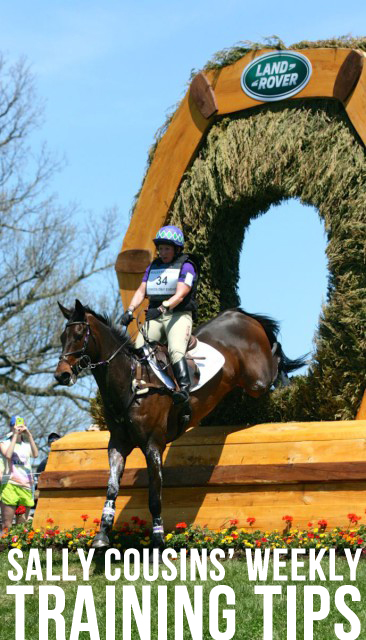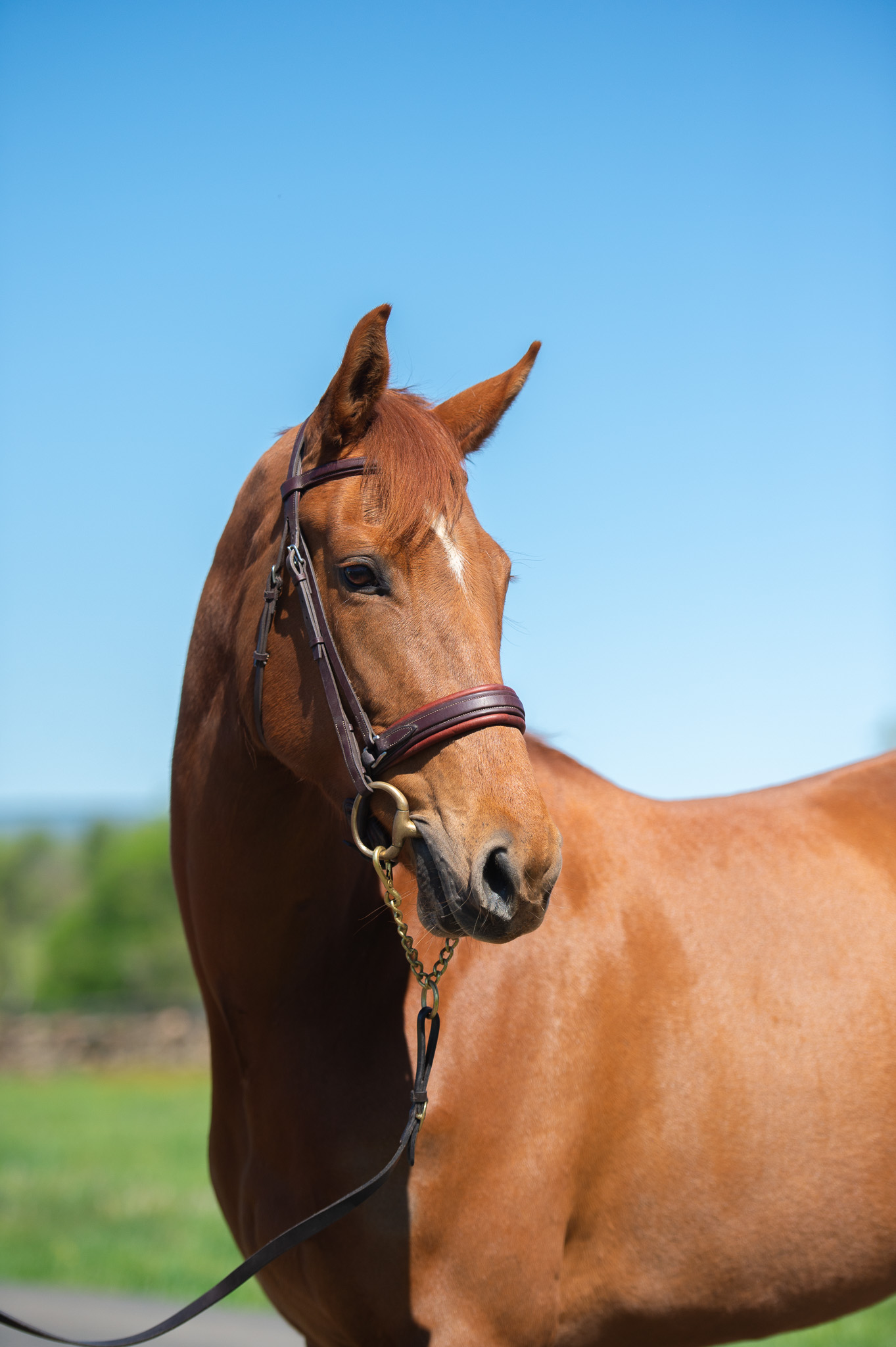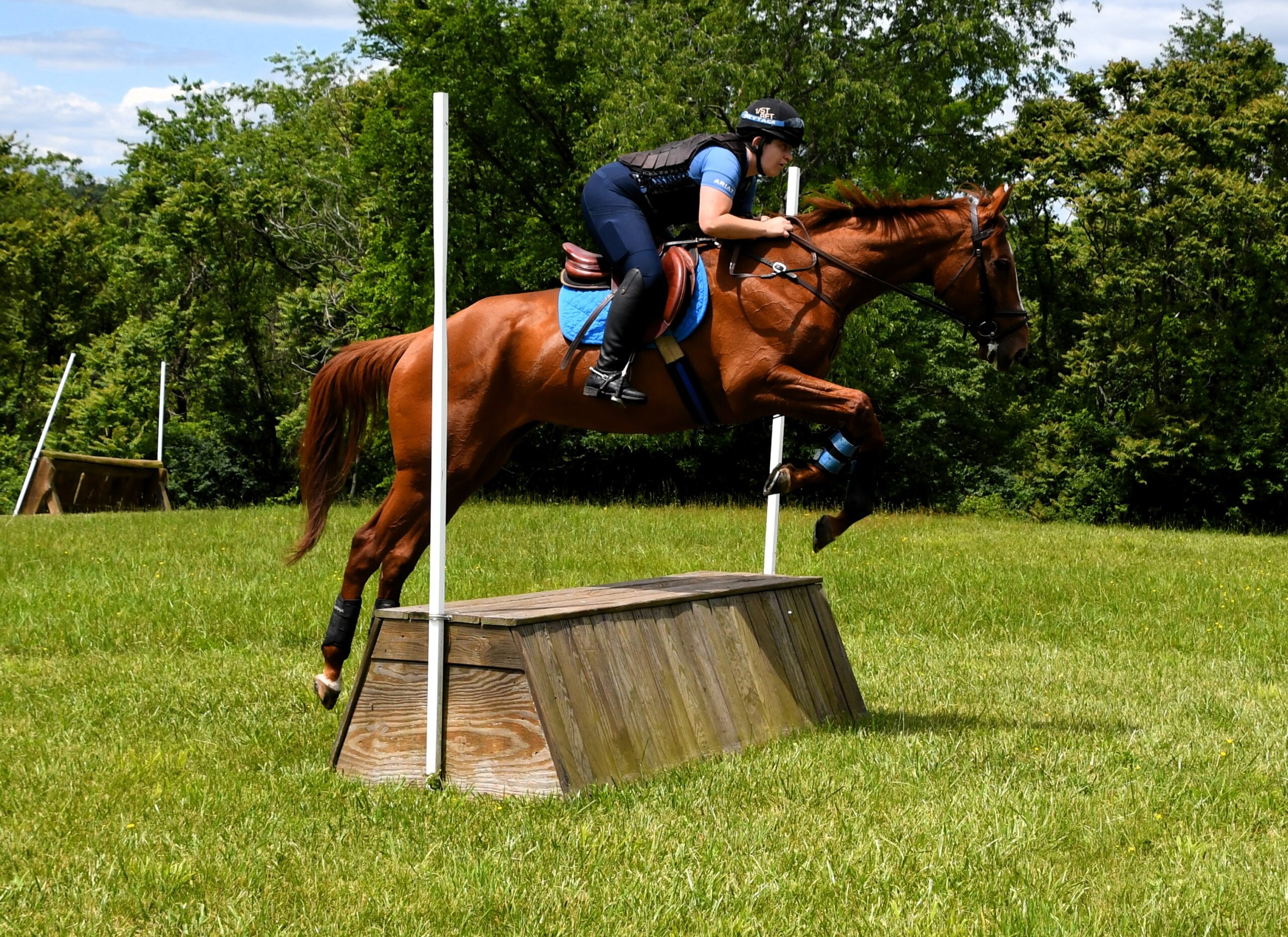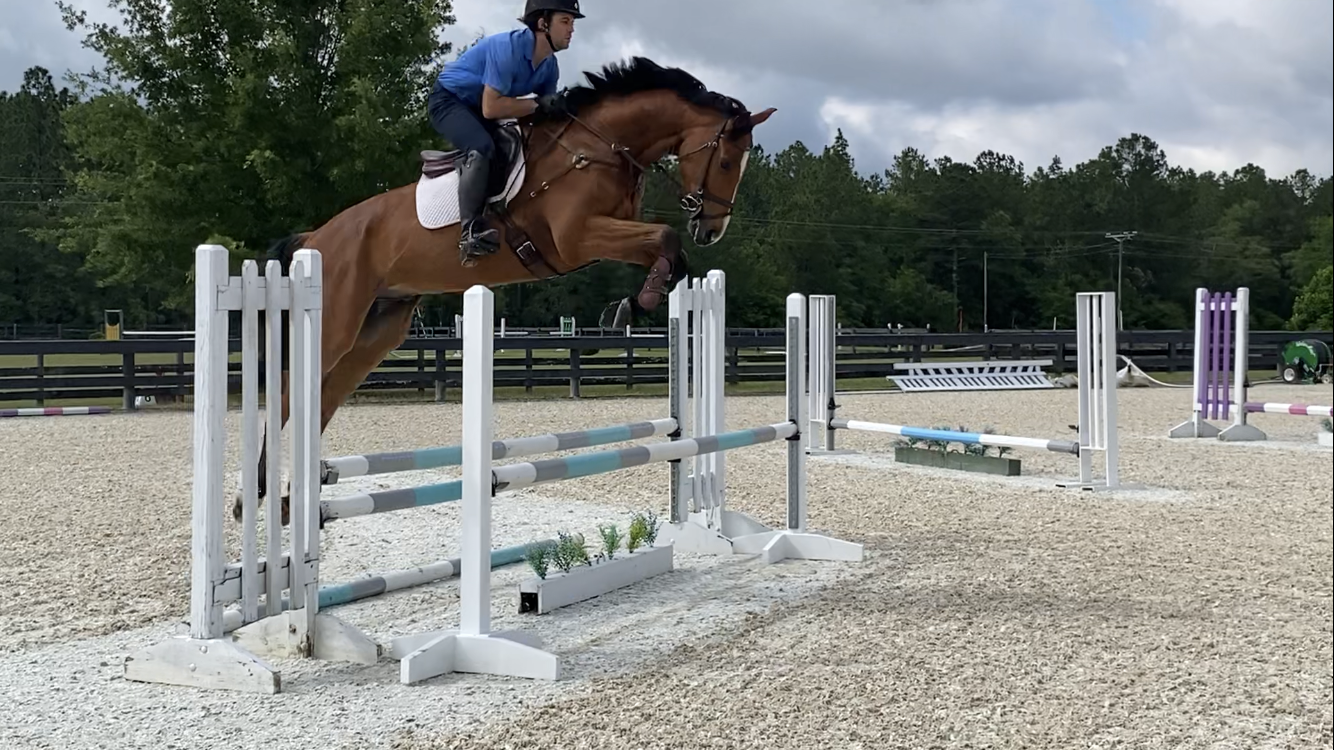 Daniel Stewart with Tara O’Grady of An Equestrian Edge who hosted the clinic and Sophie Tallman, an
aspiring upper level Young Rider and her 6-year-old OTTB. Photo courtesy of Danielle Zandirad.
Daniel Stewart with Tara O’Grady of An Equestrian Edge who hosted the clinic and Sophie Tallman, an
aspiring upper level Young Rider and her 6-year-old OTTB. Photo courtesy of Danielle Zandirad.
A few weeks ago, I had the opportunity to ride in a clinic with Daniel Stewart. For those readers who do not know Daniel Stewart, he is the author of the equestrian sport psychology “Tip of the Month” that is featured on the USEA’s website. He has also been a successful international riding instructor and trainer for over 25 years.
In addition to the United States, he’s trained riders in Spain, Portugal, England, Canada, Mexico, Switzerland, Belgium, United Arab Emirates, Greece and the West Indies. From 1999 to 2007 he coached riders on several US Equestrian Teams to success at World Championships, World Equestrian Games and the Olympics.
Daniel Stewart has a degree in Sport Science, and in addition to his “Tip of the Month” excerpts, he is also the internationally acclaimed author of the equestrian sport psychology book Pressure Proof Your Riding, rider fitness book Ride Right, and equestrian fitness boot camp DVD, E-90—EQ.
It’s no wonder he is considered to be one of the world’s leading experts on equestrian sport psychology, athletics and performance! A huge thank you to Tara O’Grady of An Equestrian Edge and Erin Gordon, owner of Silver Lining Stables, who were nice enough to set up the clinic with Coach Stewart for 12 horse and rider pairs.
Day One

The setup of the ring for the clinic for all three groups. Heights of the jumps were different for each group (2’,
2’6, and 3’). Photo courtesy of Danielle Zandirad.
During the first day of the clinic, Daniel introduced himself to the entire group of riders and auditors and gave us a background of himself and his clinics. He also discussed what the day’s exercises would consist of so riders knew what to expect before mounting their horses. Right from the start, I could tell how positive and upbeat Daniel was. This made me more excited than nervous to ride with him. He portrayed a laid back demeanor and even cracked jokes with the crowd, which made everyone feel at ease.
This clinic in particular was entitled “The Distance”. It would focus on us as riders seeing a distance with our horses while being put under pressure. We would ride the first day and follow the clinic up by a sports psychology seminar, which will be discussed in detail later. We would also be videotaped throughout the clinic so Daniel could analyze us individually on the second day and concentrate on our positions to, over, and after the fences.
The clinic was separated into three groups. The first group consisted of four riders at 2’6, the second group had four riders at 2’, and the third group of the day which I rode in consisted of five riders at 3’.
The ring was set up so there was a bounce on each long side, and a vertical on each short side of the ring. The jumps were also numbered 1-4. The course appears to be simple, yet when Daniel added in all the mental tasks that were to come it was taken from seemingly easy to very challenging.
Throughout the day, Daniel set the bar extremely high but did not over face the groups with challenges he knew they would not be able to conquer. It was the perfect balancing act! Each group consisted of different levels, so he adapted the level of difficulty accordingly.
Daniel had my group warm up on the flat and then over fences by counting 4 strides up to the jumps in order to give us a feel for what was about to come. This was difficult for me at first. I am used to riding warmbloods at school, most of which have a big step.
Yet, I was catch riding a 15’3 hand Appendix Gelding named Pilgrim (thank you to the Tallman’s!). Pilgrim has a shorter stride in comparison to the horses I am used to riding and thinks it’s funny to do this thing where he really pulls his rider to the fence but decides he doesn’t want to go over it at the last minute! Long story short: He’s super fun, but can also be tricky. After warming up, we jumped right into the clinic, where some rules applied:
RULES:
- Jump all four jumps however you want
- Daniel would give us the first jump to start with and how many strides we had to jump until each jump (So Daniel would tell a rider “count 4 strides to all 4 jumps” or “count down from 7 (7, 6, 5, 4)
- Change Direction once or twice (depending on what he assigned)
- Complete the course in 35 seconds
FAULTS:
- 5 faults for forgetting to change direction
- 4 faults for every rail down
- 1 fault for every second over the optimum time
- 1 fault for every second under the optimum time
- 1 fault for each distance missed (so if you counted three out when you were supposed to count five out, you would receive a fault)
Notice that Daniel did not give out faults for refusals. Since I was on a horse that acquired the occasional dirty stop, I initially asked about this in the beginning. Instead of giving out penalties for refusing a jump, he would stop his watch and help the rider work though the refusal to get their horse over the fence confidently.
This illustrated what a great horseman Daniel was. Better believe, Pilgrim did stop dirty on me not once, but twice in the beginning of the clinic and Daniel helped me work through it. I did not have any other refusals throughout the two days!
Back to the faults and rules — there was a catch. If one went over 7 total penalties in each round, the rider would have to get off their horse and do 50 push ups on the mounting block. I mean, we are athletes as riders! 50 push ups should be easy, right? Almost every rider was up on the block at least once each day.
Of course in my first round, I almost blanked. How could one remember to do so many things at once and not mess up? I messed up my distances, forgot to change direction once, and went too fast accumulating more than 7 penalties. Onto the block I went! Although I felt discouraged at first, Daniel showed me that it is not really about the act of messing up, but how you recover and learn from those mistake to get better! Indeed, both my group members and I improved throughout each round.
As riders, we all feel good in our comfort zone. It’s comfortable there! Yet, what makes a good rider great is getting out of that comfort zone to improve themselves.
Before Daniel ended the riding portion of the clinic for that day, in our group, he had us switch horses. He was throwing yet another curveball our way! I ended up switching onto a horse named Challenge, a 5-year-old Canadian Warmblood Gelding; a much different ride than Pilgrim.
I was glad Daniel had us do this. It illustrated that the more you practice, the better you will get. In the beginning of the clinic, if we all tried to switch horses it probably would have been a disaster. Yet, we all got on and catch rode with success under pressure. We were slowly but surely learning how to concentrate and stay calm under the circumstances.

Daniel with the third group of the day! Photo courtesy of Erin Gordon.
After all the groups were done riding, we moved inside to Erin’s house (the owner of Silver Lining Stables where the clinic was held) to discuss the day and for a sports psychology seminar. Daniel talked about an array of topics that concentrated on riders as athletes and how we learn, the different kinds of learning, how to get over fears, how to become more positive, the schooling mindset versus the showing mindset, and how to instill confidence. In addition, we discussed how to create a brand for yourself as a rider.
When discussing the importance of creating a brand for oneself, Daniel concentrated on the steps to complete this process. First, he told us that one needs to determine an “Athletic Anthem” for themselves. This could be a song that pumps you up or makes you feel good before you go into the ring. Just like one sees a professional basketball player walking into the locker room with their headphones on to get in the zone, we as riders should do that too!
Next, one should create a cadence that pertains to the song, or a line within the song which acts as a slogan you can say when you are riding. This will help to calm yourself down. For example, the one Daniel discussed with us was saying something like “straight to the top” in a rhythmic tone to keep yourself on your A game. Then one should branch that out into a word.
Daniel talked about one young rider with a pony he coached that had the word “Lucky”, which in turn stood for “Look Up Cluck Kick Yell”. From this word, Daniel discussed how one should create a logo for their brand. For example, the young rider with the pony had a four leaf clover on her saddle pad as her logo!
And finally, come up with a pre ride ritual before you go into the ring or before you head out for cross country to finalize your brand. This process of branding yourself will set you up for success at shows!
Stay tuned for a summary of the second day with Daniel Stewart tomorrow!








































